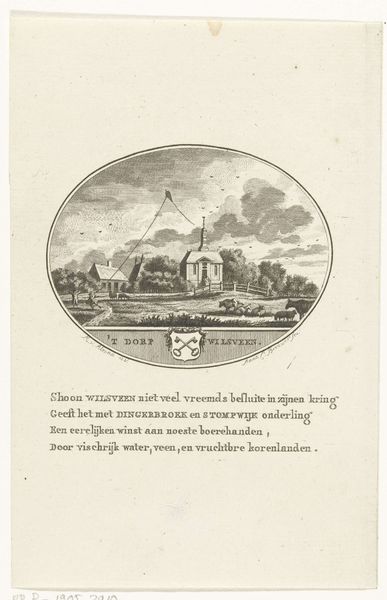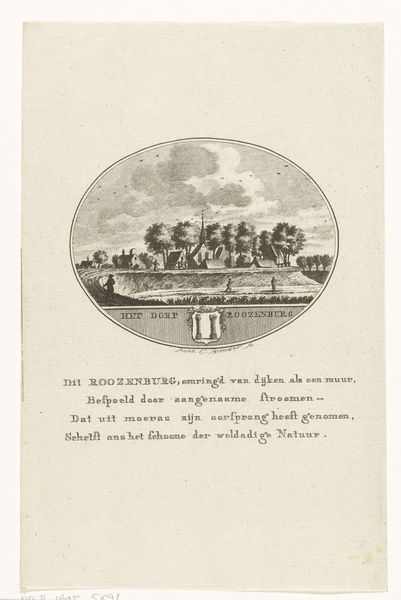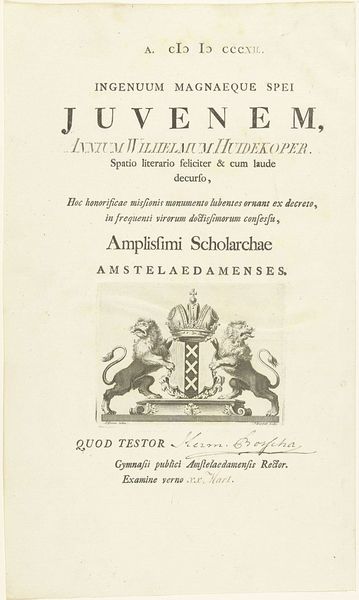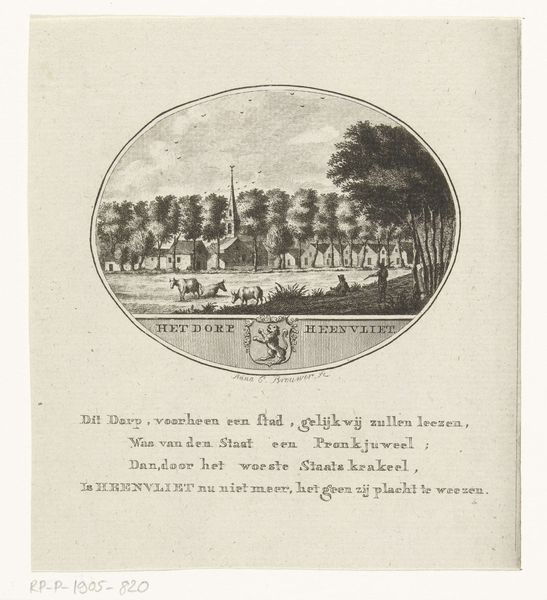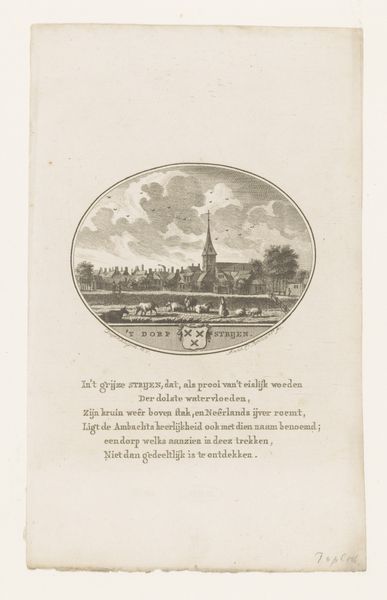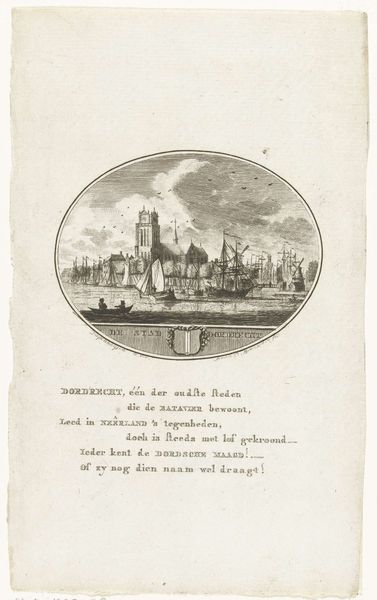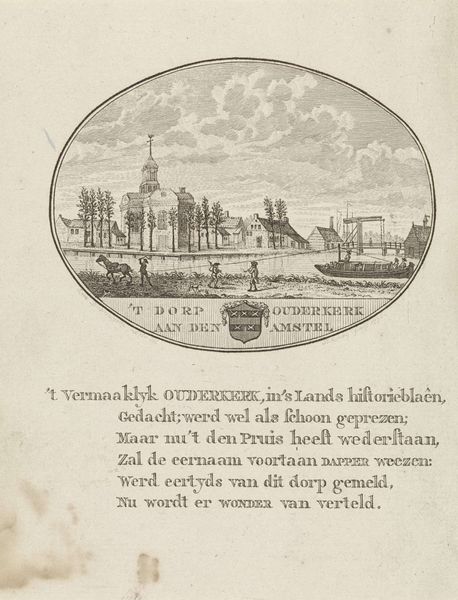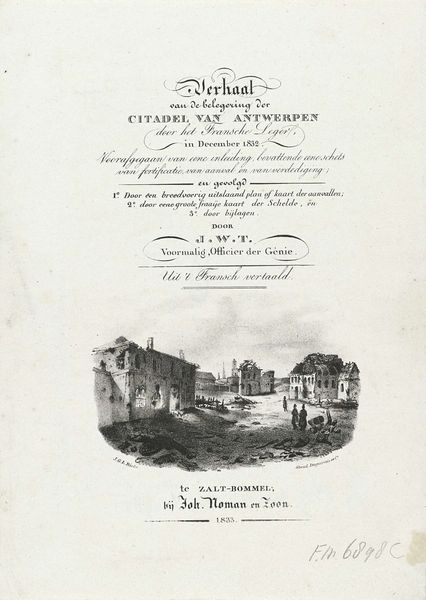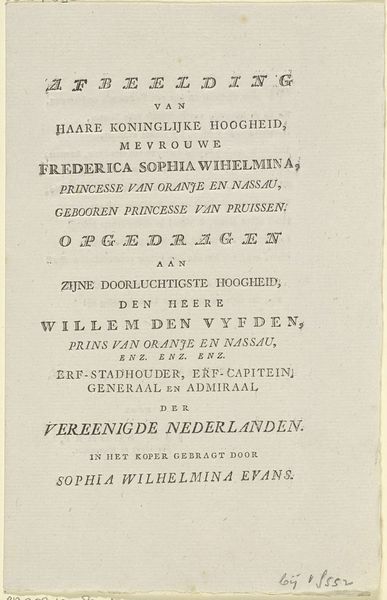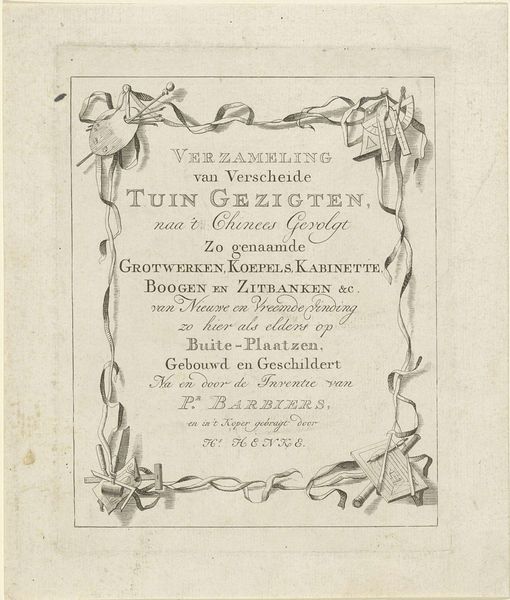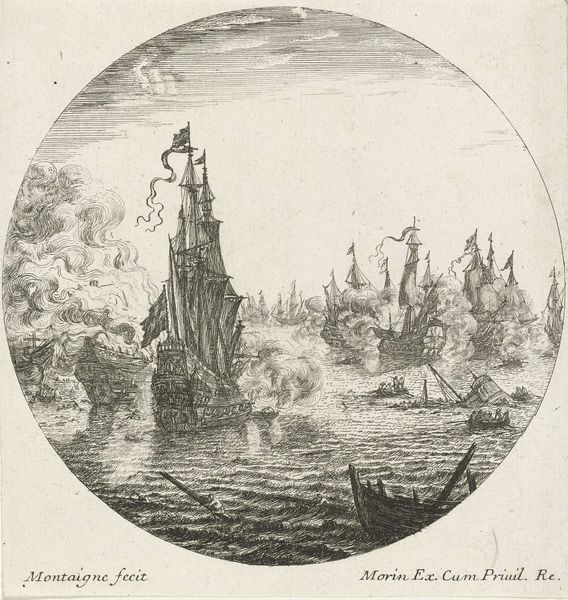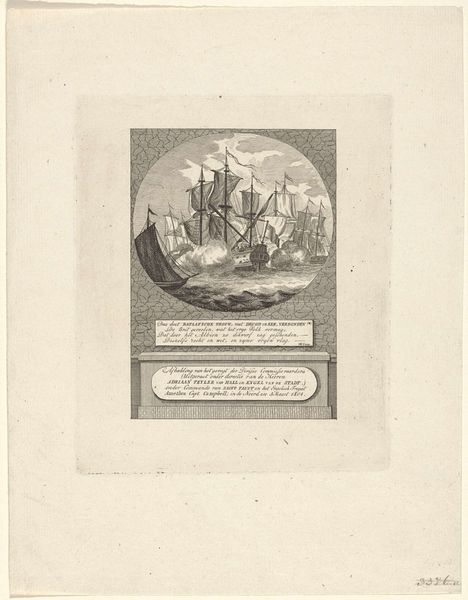
print, engraving
#
dutch-golden-age
# print
#
landscape
#
engraving
Dimensions: height 230 mm, width 143 mm
Copyright: Rijks Museum: Open Domain
This print of Fort Du Bus in New Guinea was made by Abraham Veelwaard, around 1830. It's an etching, a process that involves coating a metal plate with wax, scratching an image into the wax, and then submerging the plate in acid. The acid bites away at the exposed metal, creating lines that hold ink. The fineness of line achievable with etching allowed Veelwaard to capture a wealth of detail, from the rough-hewn construction of the fort to the surrounding landscape. The print gives an evocative sense of how these remote outposts of empire were constructed. Look at the image in the oval vignette; you can see the individual strokes used to render the texture of the wooden structures, the foliage, and even the water. But it also raises questions: about the labour involved in building and maintaining such a place, and the impact of colonial presence on the local population. These kinds of prints were important tools in shaping public opinion, presenting a carefully constructed image of colonial enterprise. Understanding the process by which it was made helps us to see through the image and understand its underlying message.
Comments
No comments
Be the first to comment and join the conversation on the ultimate creative platform.
